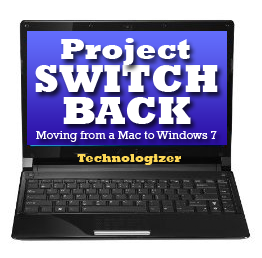Microsoft’s Surface tabletop computer team has graduated from being a pet project of founder Bill Gates to a group that stands up on its own, and contributes back into other parts of Microsoft.
That is the impression that I left with after meeting with Surface General Manager of Software and User Experience Brad Carpenter this week at Microsoft’s Professional Developers Conference (PDC) this week in Los Angeles. Carpenter said that Microsoft had more than four times as many partners for Surface as it did a year ago, and that the team contributed technology to Windows 7, including applications that are installed by computer makers.
While it is true that Surface hasn’t revolutionized how the world interacts with computers yet, Microsoft is very serious about the touch-screen interface. To that point, every PDC attendee received a free touch-screen laptop to write touch-screen applications with.
Silverlight 4 also allows applications to invoke Windows touch screen interfaces, so that online puzzles can become much more interactive. And that’s just the beginning.
Carpenter said that Microsoft is working with partners in over 18 markets to help them design touch screen applications that have high payback on their investment. Some of its development partners have also begun to build components for Surface applications.
At PDC, Microsoft announced that students from Carnegie Mellon University in Pittsburgh designed an application that ported Dungeons and Dragons to Surface. A group of German programmers wrote an application that pulls up information from specialized designed business cards.
Some other recent deployments that he cited are with Hardrock Café, Sheraton Hotels and Resorts, and Vodaphone, according to Carpenter.
Surface has momentum, and its tie into Windows 7 keeps it viable. It will remain a niche product, but its successes will help make it a much more common sight at your local mall.

 Microsoft wants Silverlight to be optimized for every platform that it runs on, said Brian Goldfarb, director of developer and user experience platforms at Microsoft, during an interview at the company’s Professional Developers Conference (PDC) on Wednesday (Nov. 18).
Microsoft wants Silverlight to be optimized for every platform that it runs on, said Brian Goldfarb, director of developer and user experience platforms at Microsoft, during an interview at the company’s Professional Developers Conference (PDC) on Wednesday (Nov. 18). At Microsoft’s Professional Developer Conference in Los Angeles this morning,
At Microsoft’s Professional Developer Conference in Los Angeles this morning,  It’s been a couple of weeks since I reported on
It’s been a couple of weeks since I reported on  We’re still very, very early in the Windows 7 era: The operating system only went on sale as an upgrade and on new PCs on October 22nd. But it’s not too soon to check in with people who pounced on Windows 7 at the first opportunity–after all, their experiences will help everyone else decide whether the upgrade is worth the effort and money. And if you’re one such early adopter, we’ve got some questions about your experiences.
We’re still very, very early in the Windows 7 era: The operating system only went on sale as an upgrade and on new PCs on October 22nd. But it’s not too soon to check in with people who pounced on Windows 7 at the first opportunity–after all, their experiences will help everyone else decide whether the upgrade is worth the effort and money. And if you’re one such early adopter, we’ve got some questions about your experiences. [UPDATE: Microsoft’s Windows blogger Brandon LeBlanc has
[UPDATE: Microsoft’s Windows blogger Brandon LeBlanc has 